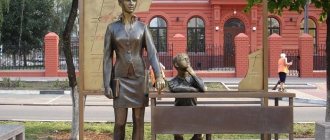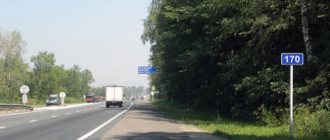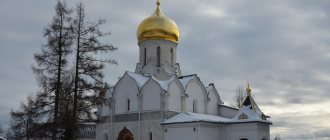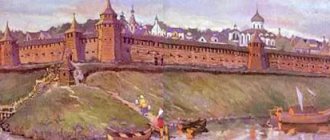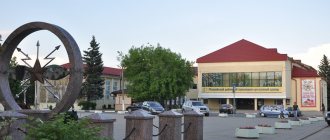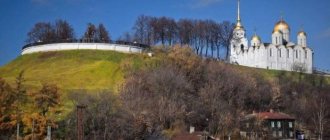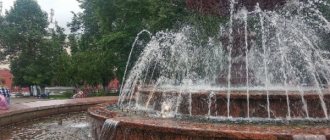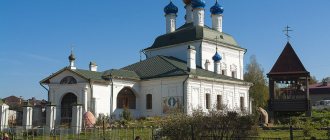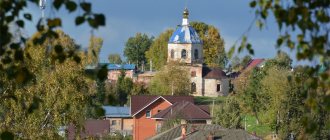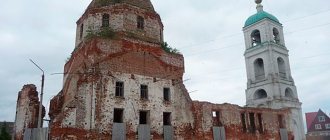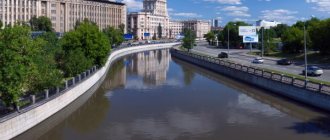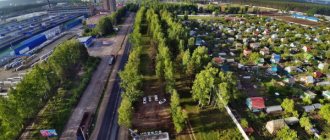| Attractions With children What to see in the Belgorod region Tips and reviews from tourists Where to stay in Belgorod |
Belgorod is a small city, a cultural, industrial and educational center of one of the regions in the southwest of Russia. It may be of interest not only to neighboring Kursk and Voronezh, but also to everyone who wants to discover a new page in the big book - Russia. The sights of Belgorod can be seen in one day, however, the region also hides many beautiful places for which a day is definitely not enough.
Not everything is clear about the founding date of Belgorod. The official year is 1596, but there are versions about the 10th century. Regardless, the fortress, and later the city, was often subject to raids by neighbors who wanted to get these lands. During the Great Patriotic War, Belgorod was occupied twice, and fierce battles took place nearby. Now its history is largely connected with this period. It was one of the first to be awarded the title of City of Military Glory.
Belgorod from the observation deck on Kharkov Mountain Photo: © miljkovic14
Modern Belgorod has more than once received the status of the most comfortable city in Russia. The city center is compact and pleasant and convenient to walk around. On the streets and boulevards there are many interesting details, architectural creations of recent years and a few architectural monuments that managed to survive the war. On the page of this advice about what exactly to see and where to go for a tourist in Belgorod in one day.
Getting to know the history of the city
Belgorod - “white city”. There are 2 similar versions of why it was called that:
- In the 17th century, the fortification was erected from white stone.
- The city was built on a chalk mountain - Belaya.
And there is fierce debate among historians about the date of the city’s founding. One of the points of view is the beginning of the construction of a defensive fortress on the site of the Seversky settlement (settlement of the Eastern Slavs) in 1596. Tsar Fyodor Ioannovich ordered its construction on the mountain on the right side of the Seversky Donets River. But she didn't last long.
This place was located at the intersection of modern Kalinin and Studencheskaya streets.
The site for the construction of the second fortress was the left bank. Now this area is called the Old Town. Since 1650, the main part of Belgorod was again located on the right bank. Since 1727, it became the center of the Belgorod province, and 52 years later - a district town of the Kursk province.
The city survived attacks by the Crimean khans, Polish-Lithuanian feudal lords, and an assault on the fortress by Zaporozhye Cossacks led by Yakov Ostryanin. The buildings had to be rebuilt. After the advent of Soviet power, it was part of Ukraine for some time and even served as its temporary capital. Later it was annexed to the White South, a territory controlled by the White Guard Volunteer Army.
Archaeological research carried out in Soviet times allowed Academician Rybakov to conclude that the settlement appeared in the 10th century. In 1995, after the government adopted a resolution, Belgorod residents celebrated the 1000th anniversary of the city.
During the fighting and occupation (October 24, 1941 - August 5, 1943), not a single intact building remained in the city. The Nazis practically exterminated the indigenous inhabitants by shooting them in the park, tormenting them at the Gestapo, and burning them in a reed factory.
Where is Belgorod
The city of Belgorod is the administrative center of the Belgorod region, located in the southwestern part of Russia. I happened to visit this city in transit during my trip to Ukraine. It was no coincidence that Belgorod ended up on my route, because it is located only 40 km from the border with Ukraine, and the distance to Kharkov is 70 km. It is worth noting that Belgorod is located 700 km south of Moscow, which is equivalent to one hour by plane. Also very interesting is the location of Belgorod on two hills. The Vezelka River flows between the hills, which flows into the Seversky Donets River in the eastern part of the city.
Bogdan Khmelnitsky Avenue
Locals call it “Bogdanka”. The federal road "Crimea" passes through it.
Chapel-rotunda in honor of the 2000th anniversary of the Nativity of Christ
The structure welcomes travelers arriving in the city from the north. An angelic figure meets them and blesses them. Along the entire length of the avenue there are many monuments, squares, and parks.
Unique forests and tracts of the Belgorod region
The nature of the Belgorod region is diverse. Here you can find relict pine trees next to meadow grasses, majestic oak forests and free steppes. It is not for nothing that people have always sought to settle in this amazing region under the canopy of forests.
Bekaryukovsky pine forest
- Coordinates: 50.436616, 37.062126.
This protected area, named after the landowner whose estate was located nearby, is located on the right bank of the Nezhegol River. The owner here is the majestic chalk pine, which has proven to the whole world that it can and will grow on chalk deposits, where there is not a drop of fertile soil.
Most of the trees here are 200 years old or more. Despite this, today they are endangered, and only some specimens can produce high-quality seed material.
Interest in this site was shown back in 1819. Then the Sophia wolfberry was discovered here, which in Russia was found only in Altai. But already in 1965, it disappeared from these places without a trace, like many other plants. And the reason for this is the lack of careful attitude of man towards nature. Therefore, in 2012, the European Convention on the Conservation of Wildlife and Natural Habitats assigned the status of a promising territory to the Bekaryukovsky Forest.
Beam Stone Log
- Coordinates: 50.537500, 36.843056.
Kashlakov ravine, or Stone tract, is located in the Shebekinsky district. It is considered one of the picturesque places in the Belgorod region, so it is planned to open a botanical garden here and develop ecological routes.
At the bottom of the ravine, 5 springs flow out at once, merging into one stream, which disappears at the exit, but where is unclear. Here, below, it is always humid and wild garlic grows in large quantities, which is completely unusual for these places.
Petrovskie Borki tract
- Coordinates: 50.133889, 37.885000.
The ravine is located in the Valuysky district, on the right bank of the Kazinka River - this is the territory of marmots, the main ones here. The chalk slopes of the tract are covered with steppe herbs. It is because of this that it is considered one of the most picturesque corners.
Bolshie Kulbaki tract
- Coordinates: 50.660200, 36.383030.
This is the name of a huge field not far from Belgorod. It was from here that the construction of the Belgorod defensive line and the settlement of Belogorye began. Here stood one of the largest ancient fortified cities - Bolkhovets.
For many years in a row, an annual festival dedicated to the history of the Belgorod region has been held in Bolshie Kulbaki.
Fortifications were specially built for it and the earthen rampart left over from the old city was strengthened. In the future, it is planned to open an interactive museum dedicated to the historical past of Russia in the 17th century.
People's Boulevard
Part of the territory is occupied by the Central market. There are also a stadium, shopping centers, and a city lyceum, the history of which dates back to 1860. And how many original monuments are there on the boulevard that attract the attention of tourists and want to take pictures with them:
The sculpture of the First Teacher was installed in the courtyard of the Lyceum
Not only visitors, but also city residents strive for the Sundial. Lovers come to them on dates. In the dark, the entire Milky Way is visible on the dial, allowing you to study the zodiac constellations.
Sundial in Belgorod
The monument to the janitor was erected to commemorate the role of these workers in the cleanliness of the city. Belgorod is one of the cleanest cities in Russia, which has been repeatedly noted by the government. The bronze sculpture weighs 175 kg
Chelnoki - a monument dedicated to the first entrepreneurs. Installed near the central market. Its height is 3 meters
Speaking about unique sculptures, it is necessary to mention the monument to an honest traffic cop, dedicated to the guard Pavel Kirillovich Grechikhin. He was distinguished by his crystal purity, issuing fines to all violators - relatives, friends, wife, even his boss. In 2016, the sculpture changed its original installation location and was assigned to a new address - the intersection of Korochanskaya and Volchanskaya streets.
Monument to an honest traffic cop
Where to stay in Belgorod
For a small city, Belgorod has a good selection of accommodation, represented by hotels, apartments, and hostels. The hotels are mostly 3 stars, ten have 4 stars and one more has 5 stars. A significant part of them are located in the center, where the main tourist routes pass. The most budget rooms are offered in hostels, ranging from 2-3 thousand rubles. per day for two - in some apartments and in simple hotels, 3-4 thousand rubles. 3 and 4 star hotels will cost a little more, rooms in the best and largest 4 star hotels will cost a little more.
- Belgorod Hotels
- Hostels for Budget Travelers
- Flats and apartments
When booking accommodation on Booking.com, do not forget about cashback: Cashback promotion for Tourist. RU
Smolensky Cathedral
The story of the appearance of the temple begins in 1703. In the chronicles, records were found about an unusual sign that appeared before the watchman of the Belgorod regiment. Looking at the gates of the fortress, he saw that a ray flashed on the icon of the Smolensk Most Holy Theotokos, and from it a candle ignited. In 1705, a wooden church was built on that site. 1727 - the beginning of the laying of a stone two-story church in the Baroque style with the participation of the Archbishop of Belgorod.
The Smolensk Cathedral in Belgorod is one of the oldest surviving churches
The temple was on the verge of destruction twice. During the war years, it was severely damaged by artillery shelling and lost its bell tower. After the war, the damaged buildings were used as warehouses. Twice they tried to blow it up as a building that could not be reconstructed. But the temple survived and they finally decided to restore it for the organ hall. Since 1991, services have been resumed there.
The Smolensk Cathedral attracts visitors with the Hodegetria icon of the Mother of God kept there. Otherwise they call her “Guide”. She is over 300 years old. Every month, a car with an icon drives around the city to prevent all troubles.
Temple address: Civil Avenue, 50.
Tips and reviews from tourists
Belgorod is visited for various reasons, and one of them is tourism. People come to get to know the city for one day, including it in a big tour along the western borders of Russia, or set aside several days for a detailed study. Belgorod can be liked or controversial, surprising or not meeting expectations - this is how you can describe the impressions of tourists who visit it.
The first images of Belgorod will help compile user reviews:
- miljkovic14 in the story “Belgorod. May 2019";
- Alexandra Goretova in the publication “Belgorod - a city of living museums and fascinating parks”;
- Studio Spbtales in “Purely in Belgorod (travel to Belgorod)”;
- as well as the photo album “Belogorye” from Evgeny Sapronov.
All tourist reviews about Belgorod on Tourist. RU
Hotel "Belgorod" Photo: © miljkovic14
May be useful:
- background information from the guidebook;
- tips on how to get to Belgorod from different cities of Russia;
- advice on what to bring from Belgorod.
Assumption-Nicholas Cathedral
This is the oldest building in Belgorod. Construction of the city's first stone building began in 1690, replacing a wooden church.
Peter I donated 100 rubles for the construction of the temple. At that time it was a huge amount. For more than 200 years, a letter written personally by the emperor was kept in the cathedral.
The consecration of the Assumption-Nicholas Cathedral took place in 1703
Extensive restoration work was carried out after a fire in 1759, as a result of which the roof was almost completely burned, the domes and iconostasis were damaged, and the walls inside the building were charred. Features of the cathedral architecture:
- unusual asymmetry of the layout;
- a single-tier bell tower (there were very few of these), but it has not survived.
During the years of Soviet power, it housed a prison for prisoners and a bakery. During the bombings during the war, townspeople took refuge in the safe basements of the cathedral. Since 1993, it was included in the Marfo-Maryinsky Convent. Ministries resumed there.
Address: Pushkin street, 9.
Sights of Belgorod on video in 4k:
Temple of Faith, Hope, Love and their mother Sophia
The temple of seventeen domes was erected at the beginning of the 2000s, but five years later the wooden church completely burned down. A year after the restoration, worship services resumed.
After construction, the Spiritual and Educational Center began operating on the territory of the temple.
Belgorod Dinopark
In 2022, on the day of the liberation of the city, a dino park was opened. In the park there are more than eighty dinosaur figures that can make sounds, wave their paws and move their jaws.
The dinosaurs are life-size, their “skin” is made of silicone material, which makes it look natural. Near each figure there are signs with information about this reptile.
The entrance to the dino park is represented by the gate from the movie “Jurassic Park”. On the territory there is a dino museum and a cinema where scientific films about ancient lizards are broadcast. There is also a paleontology playground for children.
Transfiguration Cathedral
The cathedral is easily accessible from the train station. You can walk. It is located on Preobrazhenskaya Street, 63-B, near Cathedral Square.
Transfiguration Cathedral is more than 200 years old
The cathedral was consecrated in 1813 to commemorate the victory of the Russian people in the Patriotic War. A sign at the entrance tells about this. High ranks of the clergy paid attention to the temple:
- His Holiness Patriarch Alexy II celebrated the liturgy there;
- The temple was awarded a rare church award from His Holiness Patriarch Kirill.
Inside the cathedral, the rich paintings on the walls and multiple icons, and a large beautiful iconostasis are striking. It is worth mentioning the “Chernobyl Savior” icon, dedicated to the people affected by the disaster.
The cathedral contains the relics of St. Joasaph of Belgorod, which have been preserved almost completely. Every day, after the service of the water blessing prayer, they are opened for worship with the opportunity to touch the hand of the saint. They turn to him with a request for healing from an illness. For the period from August 19 to September 16, the relics are transported to the St. Joasaph Cathedral in Belgorod.
Several other shrines :
- Icon of the Mother of God “The Sign” . For a long time it was lost. It was discovered during the demolition of old houses in a terrible condition - the surface was covered with a layer of rust. It was placed under glass as an exhibit in the local history museum. Soon the staff noticed that the icon was gradually renewing itself - first the face of the Mother of God appeared, then the figure of the Child and the signature under the icon.
- The miraculous icon of St. Nicholas the Ratnoy , known for its miraculous stories. During one of the attacks, the Tatars abruptly stopped at the dam, seeing the abbot with an icon of St. Nicholas the Wonderworker. Then they turned around and began to run away. Many fell into the water with their horses and died. This happened in the village of Ustinka, Belgorod region. The relics are over 500 years old.
- Icon of Elijah the Prophet with a stone from the cave in which he prayed. The temple area is distinguished by its cleanliness, richness of colors, and paths made of paving slabs.
Sights in the vicinity of Belgorod
Museum-Reserve "Prokhorovskoye Field"
Museum-Reserve "Prokhorovskoye Field"
Began work in 1995. The historical reserve covers the field of the famous tank battle near the village. Prokhorovka. There are memorial structures, monuments and examples of armored vehicles from the Second World War. Here you can learn many historical facts of the war years.
Address: Belgorod region; GPS: 51.02165, 36.67905
Opening hours: daily from 10:00 to 20:00; Monday - closed
Entrance: for adults - from 50 rubles.
Belogorye Nature Reserve
Belogorye Nature Reserve
Operating since 1999. The reserve is located 50 km west of Belgorod. This is a natural protected area. It also includes the Forest on Vorskla - a historical oak forest. The reserve also includes steppes, tracts and mountainous areas.
Tourists can visit the reserve only with a guide. There are special routes for visitors here. This interesting and picturesque place for outdoor recreation will appeal to city guests.
Address: Monastyrsky lane, 3, Borisovka, Belgorod region; GPS: 50.61901, 35.96628
Opening hours: daily from 9:00 to 16:30; Saturday and Sunday are days off
Entrance: adults - 80 rubles.
Kholkovsky Monastery
Kholkovsky Monastery
Cave monastery 100 km east of the city. The monastery has existed since the 17th century. Under Catherine the Great it was abolished. Only in the 1990s did they begin to restore the monastery.
Now there is an underground church with an area of 60 square meters. m. There are also monastic cells located underground. At the top there is the Church of the Don Icon of the Mother of God. It’s worth coming here to see the unique cave temple and admire the surrounding nature.
Address: Belgorod region, Chernyansky district, village. Kholki, st. Monastyrskaya, building 1; GPS: 50.86326, 37.7543
Opening hours: Mon.-Fri. from 10:00 to 16:00; Sat.-Sun. from 11:00 to 16:00
Free admission
Official website: https://www.holkovskiy-monastyre.ru/
Barkov's Mill
Barkov's Mill
Steam mill from the late 19th century. It is located near the village of Novoivanovka. It’s hard to believe, but grain was ground here until the beginning of the 21st century. In 2004, the building received the status of an architectural monument, and excursions began to be organized.
The mill is a six-story building. No nails were used in its construction, only wood veneers. The building is of interest as a unique monument of industrial architecture of the 19th century.
Address: Belgorod region, Volokonovsky district, village. Novoivanovka; GPS: 50.60473, 37.78017
Belgorod Reservoir
Belgorod Reservoir
The reservoir or "Belgorod Sea" is located south of the city. It was created in 1985 on the Northern Donets River to provide water to local industry. But very quickly the reservoir turned into a water recreation area.
In the last 10 years, good beaches have been built here. Villages near the sea are actively developing tourism - recreation centers and amusement parks are being built, cafes and bars are opening, and supermarkets are operating.
The reservoir is also valued for its excellent fishing and the opportunity to windsurf. In short, you can relax here well in company or with your family.
Address: Belgorod region; GPS: 50.57326, 36.62174
Picnic park in Solomino
Picnic park in Solomino
Not far from the reservoir, in a pine forest near the village of Solomino, there is a park with dozens of barbecue pavilions. Entertainment here includes a decent beach, a rope park, a climbing wall, bicycle rental, and boat rides. Plus, in winter there is an ice skating rink and skates are available for rent.
A convenient place for large companies - there is always a place in the gazebos, you can relax in the fresh air and play sports.
Address: Dalnyaya street, 2P, Belgorod; GPS: 50.50804, 36.64878
Opening hours: daily from 10:00 to 17:00
Monastery Forest
Monastery Forest
The wooded area on the edge of the town has been known as the Monastic Forest since the 17th century. Then, in the Log tract, an icon of the Korsun Mother of God appeared above a spring. Pilgrims flocked to the local miracle, and in the forest they built a couple of churches, set up an apiary, and built a hotel. Of course, the Soviet authorities destroyed all the infrastructure and closed the churches.
In 1995, the chapel over the source was restored. And now pilgrims are coming here again. Ecotourism is also developing here, since this territory is now part of the reserve.
Address: Belgorod; GPS: 50.6222, 36.60453
Exciting places for children
Undoubtedly, children will be pleased with their visit to the zoo and dino park. The zoo is located in a forested area. It has a fairly vast territory (25 hectares). The animals have spacious enclosures and heated wintering rooms.
"Grandma's Yard" at the Belgorod Zoo introduces domestic animals
The territory of the reserve is divided into special geographical zones. The variety of inhabitants is amazing. There are birds of prey, wolves, bears, sika deer, snakes, and a crocodile. It's fun to pose the monkeys. The artificial lake is home to waterfowl (ducks, swans, geese) and fish. Children enjoy watching them and feeding them. There are equipped recreation areas and playgrounds for children. Zoo address: Bogdan Khmelnitsky Avenue, 16a.
Another attractive place is the Dinopark, located in a pine forest. Life-size models of robotic dinosaurs will be remembered for a long time.
Belgorod Dinopark is the largest in Europe
It’s hard to part with this picturesque, spacious, comfortable, educational corner. Immediately at the gate, visitors are greeted by a huge dinosaur skull, on which children happily climb. The decoration at the entrance is a high arch and a huge gate in the form of a palisade. They can be seen from afar. And then - a huge seismosaur. If someone approaches him along the paths, he purrs and moves. There are other models of robots that can move, growl, move their paws, and breathe. They were made in the Czech Republic.
You can visit the Dinopark:
- The Dino Museum has interesting exhibits telling about different periods of the life of dinosaurs. The kids' favorite is a dinosaur skeleton with the opportunity to try to control it.
- 3D cinema showing cartoons.
- carry out excavations in a huge sandbox.
- in a store where you can buy souvenirs.
With kids
Arriving in Belgorod with children, you won’t get bored. If you only have one day to explore the city, you will have to choose what is more interesting to visit now and what to leave for later. An excellent option would be a trip to DinoPark and the Belgorod Zoo. They won't disappoint and you can easily spend half a day exploring them.
“DinoPark” occupies a rather large territory and will certainly give a head start to those you have visited before. It was created jointly with a Czech company, whose dino parks are located in the Czech Republic, Spain and Slovakia. Eighty figures of dinosaurs of all kinds, static and moving, are organically integrated into the forest landscape. On the territory there is a museum, a cinema and two interactive areas where you can dig up lizard bones or independently control the movement of a tyrannosaurus. Please note that the park is open from April to the end of October, as exhibits cannot be open in winter.
Read more: "DinoPark" Belgorod
Dinosaurs of Dinopark Photo: © Olga Vinidiktova
The Belgorod Zoo has an even larger forest park area. Clean, beautiful, well-groomed - this is how visitors see it. The animals occupy spacious enclosures designed to resemble their habitat. The zoo is decorated with flower beds, paths, recreation and picnic areas. Much has been thought out for a walk with a child: you can rent transport, heat up food or visit a cafe, and purchase food for the friendliest animals.
Read more: Belgorod Zoo
Belgorod Zoo Photo: © Vladimir Lobachev | Wikimedia Commons CC BY-SA 4.0
In addition, among the family entertainment establishments in Belgorod there are quests (Exit, in100quest, CityQuest and others), trampoline, JUMP and others), and colorful children's playgrounds in shopping centers in the Rio shopping center. and “Grinnlandia” in the MegaGRINN shopping center. The children's city of professions "Masterslavl" will help keep your child busy, and the Museum of Medieval Military Affairs , where you can touch, try on everything, and also try your hand at archery.
Even more fun options for a good weekend in a separate article:
Where to go with a child in Belgorod
Museum-diorama “Battle of Kursk. Belgorod direction"
The building was built in the form of an arc raised on a high plinth. The museum is small, but the diorama is made at a modern level. In terms of its size (1005 m2), it is the largest in Europe. The artists worked on painting the canvas for 2 years, taking consultations from the surviving participants in the battle. The plot is based on a tank battle near the village of Prokhorovka, which served as a turning point in the Battle of Kursk. Many of the characters in the film bear similarities to portraits of real participants in the battle.
Museum-diorama “Battle of Kursk. Belgorod direction"
In 2 halls, unique exhibits of the history of the war years are presented: weapons, documents, awards, personal belongings, photographs of battle participants. The open area is filled with military equipment.
Museum address: Popova street, 2.
Belgorod
Belgorod can offer guests attractions to suit every taste and satisfy the needs of a wide variety of travelers.
The historical center of Belgorod is quite compact; all its attractions fit into a one-day walking route, which is logical to start from the city center - Cathedral Square.
Drama Theater named after Shchepkina
© bazell
The main square of the city is located at the western end of Grazhdansky Prospekt, the oldest street in Belgorod. On Cathedral Square rise the building of the Regional Duma, the Drama Theater named after. M. S. Shchepkina, the Belgorod hotel, the “City of Military Glory” stele , as well as the chapel of St. Joasaph of Belgorod , which stands on the site of the Holy Trinity Cathedral, destroyed in the 1930s. — it was in his honor that the modern square got its name. Next to the chapel is a glass dome erected over the crypt where the city's patron saint was buried. Today, all important public events are held on Cathedral Square, the city New Year tree is installed, and it also serves as a walking place for Belgorod residents and tourists. If you walk about a block from the Government building on Cathedral Square, you can find yourself at the Transfiguration Cathedral - an example of classicism of the early 19th century, located on the street of the same name - Preobrazhenskaya. This five-domed cathedral houses a shrine containing the relics of St. Joasaph of Belgorod. Like other Belgorod churches, the cathedral was closed in the 1930s, but remained open in the post-war period. The building was returned to the church in the 1990s. The current cathedral is distinguished by its painted and gilded interiors.
Transfiguration Cathedral
© Igor Butyrskii
On Grazhdansky Prospekt stands one of the most beautiful churches in the city - the Smolensk Cathedral, famous for containing the miraculous icon of the Smolensk Mother of God - believers claim that it is capable of emitting light that ignites wax candles. The baroque cathedral was built in 1727-1763.
Already in the post-war period, they tried to blow up the cathedral twice, but the building survived and was returned to the church in 1991. The Smolensk Cathedral has a complex architectural plan; its appearance resembles the churches of the Ukrainian Slobozhanshchina, located next to the Belgorod region. Not far from the Smolensk Cathedral on Grazhdansky Prospekt there is a Poklonny Cross in honor of Cyril and Methodius, created by Moscow sculptor Vyacheslav Klykov.
Marfo-Mariinsky Monastery
© Manyasha
To the west of Cathedral Square stretches the Holy Trinity Boulevard, at the beginning of which stands a memorial complex on a mass grave with the sculpture “Grieving Mother”, figured steles and the Eternal Flame. At the opposite end of the boulevard - between Victory Street and Glory Avenue - there is the Marfo-Mariinsky Convent, founded here not so long ago - only in 1992. Initially, the courtyard of the Marfo-Mariinsky Monastery was located in the village of Zimovenka, Shebekinsky district, but in 1993 this monastery renamed Resurrection, and the Marfo-Mariinsky Monastery was located in Belgorod.
The monastery has two churches. One of them is the oldest surviving city temple - the Assumption-Nicholas Cathedral of the early 18th century. This cubic five-domed temple in the Moscow style was built in 1692 - 1703, almost together with the founding of the city. In the 1930s it was closed and returned to the church only in 1998. There is a hipped bell tower at the cathedral. In the northern part of the monastery there is the Church of the Intercession , built in 1791 with Baroque elements, which under the USSR was first turned into a prison and then given over to mechanical workshops.
Church of the Intercession
© Manyasha
The monastery is surrounded by a wall, the only entrance is on Pushkin Street. A relatively new religious object is built into the wall - the Chapel of the Royal Martyrs and Passion-Bearers . It was erected in 1998 at the site of the mass execution of clergy.
There are other churches in Belgorod. For example, to the south of the center on Donetskaya Street there is the Archangel Michael Church , built in 1844. It was built in the classicist style and is distinguished by its impressive bell tower. The Church of the Exaltation of the Cross, built in 1863, is located southwest of the center, on Vezelskaya Street.
From the Holy Trinity Boulevard to the Park of Culture and Leisure named after. Lenin stretches the main pedestrian street of Belgorod - the so-called Belgorod Arbat, whose official name is the street of the 50th anniversary of the Belgorod region.
Belgorod Arbat
© miljkovic14
Here you can find both Soviet-era residential buildings and more modern high-rise buildings made of glass and concrete, which house retail and office space. There are many restaurants and cafes concentrated here. The Central Market of Belgorod is also adjacent to Arbat. Among the local attractions are the Sundial, a bust of N. G. Chernyshevsky , whose name the street bore until 2004, and the sculpture “The Janitor and the Cat Vaska,” reminiscent of the fact that Belgorod has more than once been recognized as the cleanest city in the country. The main museum of Belgorod is the diorama museum “Battle of Kursk. Belgorod direction,” which tells about the period of the Great Patriotic War on the territory of the Belgorod region and, in particular, about the largest tank battle in history at Prokhorovka, located 60 km north of Belgorod. A separate building for the museum was built in 1985; it housed the country’s largest 65-meter diorama of the battle.
Museum-diorama “Arc of Fire”
© bazell
The museum's exhibition includes collections of original documents, items, photographs of the war years, and a collection of paintings dedicated to the Battle of Kursk. In the park around the museum there is an exhibition of military equipment of the Great Patriotic War, the collection of which includes T-34, Katyusha tanks and a single-seat LA-7 fighter.
Not far from the Battle of Kursk Museum there are two more museum institutions: the Museum of History and Local Lore and the Belgorod Art Museum. In the first of them you can get acquainted with a collection of archaeological finds, furniture, weapons, clothing, dishes, banknotes, and in the second - with objects of art: painting and sculpture from Soviet times, works of local authors. Chamber music evenings are regularly held in the concert hall of the Art Museum.
The exhibition of the Literary Museum, located in the only surviving city estate of the 18th century, which belonged to the merchant Selivanov, is dedicated to the writers of Belgorod, which include, among others, Grigory Skovoroda and Vladimir Raevsky.
Museum-diorama “Arc of Fire”
© bazell
Other significant Belgorod museums include the State Museum of Folk Culture, famous for its extensive ethnographic collection, as well as collections on related topics, such as Scythian archeology and the history of the Zasechnaya Line. Also interesting is the Stanislav Kosenkov Museum - a workshop of book graphic artists of the 20th century, located in an ordinary apartment on Prince Trubetskoy Street, 52 (here you need to arrange a visit in advance). The Pushkin Library-Museum is known for its collection of collectible publications and art exhibitions. Photography exhibitions in Belgorod are organized by the Photo Gallery named after. Vitaly Sobrovin . The local Communications Museum boasts an exhibition on communication theory and a collection of telephones.
All museums in Belgorod
Tourists can continue their acquaintance with the theme of the Great Patriotic War in Belgorod by visiting Victory Park, located on the banks of the Vezelka River. The Alley of Heroes is located directly opposite the Battle of Kursk Museum. More than two dozen busts of Heroes of the USSR are collected here, the central place among which belongs to the monument to Marshal G.K. Zhukov. There is also a stele with the Order of the Patriotic War and a sculptural group “Victory”.
Monument to Prince Vladimir
© miljkovic14
Despite the abundance of monuments, Victory Park is a favorite place for walks among residents and guests of the city. Here you can relax on the river bank or wait out the summer heat by the fountain with a lion, take a boat ride on the river, play sports or keep your children busy on the playground, etc. You can see the center of Belgorod from a bird's eye view from Kharkovskaya Mountain in the southern part of the city, where is the observation deck located? It is located on the roof of the restaurant and is popular among tourists due to the excellent panoramas of the city that open from it.
There, on the mountain, stands the largest monument of the city and its symbol - the monument to Prince Vladimir, 22 meters high. According to local legends, it was Prince Vladimir who founded the first settlement on the site of present-day Belgorod. Just a couple of kilometers from here, on Narodny Boulevard opposite house No. 17, there is a monument to the very real founder of the city - Tsar Fyodor Ioannovich , by whose decree the Belgorod fortress was built in 1596 to protect the southern borders of the state from Tatar raids.
Sundial
© Manyasha
To the east of the monument to the prince stretches Pushkin Alley , walking along which you can find another observation deck. It is located on the territory of Belgorod Technological University.
Another place where the surroundings are at your fingertips is Chalk Mountain . From its sandstone slope there is a beautiful view of the Seversky Donets and the territories beyond it.
A must-visit place in Belgorod is the city embankment of the Vezelka River, on which stands the sculpture “Meeting of the Vezelitsa and the Seversky Donets” - it marks the nearby confluence of the Vezelka into the Seversky Donets - a major tributary of the Don. The embankment has walking areas, squares with flowers and benches, its own attractions, including, for example, the rotunda of Peter and Fevronia in the Square of Love, the Church of the Archangel Gabriel, the white Bridge of Love , and a light fountain on the river.
What to see in Belgorod in one day
Belgorod has one pleasant feature: on its streets there are a large number of cute and touching sculptures dedicated to the most ordinary people.
Monument to the first teacher
© Manyasha
They, sometimes polished to a shine, are loved by tourists and locals. For example, there is a sculpture “Belgorod Grandmother” , who knits a stocking in the park behind the drama theater, bronze “Shuttles” with huge bags - this is a reminder of the “dashing 1990s”. In addition to the above-mentioned “The Janitor and Vaska the Cat,” there is also a “Monument to the First Teacher” with a student sitting at a desk, and a “Large Family” posing for a photographer.
Behind the Belgorod bypass road there is a recreation area “Picnic Park”, where local residents like to relax. The forest park is located on the banks of the Seversky Donets, there are gazebos for picnics, a playground for children in the shape of a ship, a rental point for roller skates and bicycles, and a beach. In winter, vacationers are offered skiing, skating, tubing, etc.
All sights of Belgorod
Neighborhoods of Belgorod
In the Belgorod region, in addition to its administrative center, there are other interesting places.
In the Transfiguration Cathedral
© bazell
For example, you can see the favorite tree of the newlyweds - the oak of Bogdan Khmelnitsky in the village of Dubovoy. According to legend, Bogdan Khmelnitsky and Prince Grigory Romodanovsky planted it in honor of the reunification of Russia and Ukraine. However, the actual age of the tree is approximately two hundred years, so the legend cannot in any way be connected with this event.
It is also worth visiting the Holy Trinity Kholkovsky Cave Monastery, located in the village of Kholki, Chernyansky district, 110 km from Belgorod. It was founded at the beginning of the 16th century and restored in the 1970s. The monastery includes caves with underground cells and corridors, the length of which is 125 meters. They maintain a stable temperature of about +10°C all year round. From the top of the mountain on which the modern temple stands, a vast panorama of the surrounding area opens up. You can get acquainted with the life of Belgorod peasants of past centuries in the Klyuchi park and the ethno-village Kostroma , located 13 km from Prokhorovka. The village has seven themed traditional courtyards, and the park with springs has a lake and beach, as well as fishing spots, a living area, and a cafe. This tourist complex hosts the Malanya folk festival every year.
Park "Klyuchi"
© Alexander Goretov
Not far from Belgorod there is a museum “Belgorod Line - Muravsky Way”, founded on the site of an archaeological zone with the remains of a 17th-century fortress rampart. Stylized defensive structures have been restored here, quests are organized, and the reenactment festival “Belgorod Line” is held.
The fortress city “Yablonov” in the village of Yablonovo, Korochansky district is another reconstructed fortress of the 17th century, opened on the site of the original Yablonov fortress built in 1637. There are all the buildings here - walls, towers, a residential courtyard, workshops, a chapel, a bell tower. "Yablonov" is a branch of the Belgorod Museum of Local Lore.
The wooden mill in Novoivanovka, Volokonovsky district, is a unique architectural monument of Russian architecture. It dates back to the 19th century. It is believed that the mill was originally located in the village of Pogromets and belonged to a local landowner, but he lost it at cards to the industrialist Barkov, so the mill was dismantled into logs and reassembled without a single nail in Novoivanovka.
Memorial "Prokhorovskoye Field"
© acvazul-v2010
70 km from Belgorod in the village of Prokhorovka there is a large-scale complex “Prokhorovskoe Field”, dedicated to the largest tank battle of the Great Patriotic War - the Battle of Kursk. It was opened directly at the scene of action. More precisely, the “Prokhorovsky Field” is a complex consisting of three museums: “The Third Military Field of Russia”, “The Battle for the Weapons of the Great Victory” and “The Museum of Armored Vehicles”. They contain large-scale collections of authentic military items. At the tankodrome you can see demonstrations of military equipment and even ride an armored personnel carrier.
Few people know, but not far from Belgorod there is a waterfall , albeit of artificial origin. It is formed by a dam on a reservoir and reaches a height of several meters. The waterfall is located in the village of Zayachye, Korochansky district, surrounded by picturesque nature, it has clean and cool water.
In the city of Gubkin, Belgorod region, there is a real record holder - the deepest iron ore quarry . The depth of the quarry is 600 m, the width is five kilometers. It is noteworthy that it is included in the Guinness Book of Records twice: as the world's largest iron ore mine and as the richest in iron ore reserves. About 4 million tons of ore are mined here per year, and according to experts, it should be enough for the next 500 years.
Literary Museum
Lovers of literature and ancient architecture will love this museum. Its location is a 2-story stone merchant mansion (the house of the merchant Selivanov) at 38 Preobrazhenskaya Street. The layout of the building is not standard. The building has been preserved in its original form, the stairs, stoves, and ceiling decoration have been restored.
Among the museum exhibits are:
- antique books;
- original manuscripts of famous writers (even Pushkin);
- objects associated with the names of Belinsky and Stankevich.
Belgorod Literary Museum in the former house of the merchant Selivanov
There is a separate room dedicated to oral folk art. In other rooms, visitors get acquainted with literature from different centuries, modern works, the history of journalism, exhibitions about cultural life, and presentations of new books. Literary evenings are held for them.
The Museum of Energy History of the Belgorod Region is located in the same building.
Sculptural compositions of Belgorod
Volleyball players
The sculpture is located on Kharkov Mountain, near the Cosmos Sports Palace. The composition is dedicated to the Belgorod volleyball team “Belogorye”. The monument consists of several figures: volleyball players during the game, and coach Gennady Shipulin, who is sitting on a bench nearby.
Students
The sculpture consists of two student figures sitting on a bench: the guy is looking at the girl, and the girl is looking at the book. With this composition the sculptor illustrates love and science.
Pushkin and Natalie
The monument consists of two sculptures: the poet A.S. Pushkin reading the poem “Madonna” and his beloved Natalia Goncharova. The sights of Belgorod cannot be complete without this place.
Memory
For the Day of Liberation of Belgorod, Kharkov sculptors presented the monument “Memory”.
The sculpture is built in the shape of a grandmother who is knitting a sock and thinking about something.
Street cleaner
The monument is represented by a man dressed in a janitor's uniform - an apron and a cap with a visor, and a cat sits next to him.
My first teacher
The sculpture is represented by the figure of a teacher and a student at a desk.
Family and motherhood
The composition symbolizes a large family: dad, mom and three children who are going to take a family photo at the fountain.
Local historian
The monument illustrates a male local historian sitting on a bench and a small playing dog.
Upside Down House
A unique landmark of Belgorod is located near the City Mall. The building is a house that stands on the roof.
The interior of the room is also upside down. While in the house, visitors are overcome by a feeling of weightlessness.
Easter fountain
The fountain is located on Friendship Alley in the City Garden. The cultural site was opened and consecrated on the day of the Resurrection of Christ and received its name in honor of the holiday of Easter. The landmark was consecrated by Metropolitan John of Belgorod.
Previously, there was a source from which water was collected for the Nativity of the Virgin Mary convent.
The fountain is equipped with dynamic lighting.
Temple of St. Seraphim of Sarov
The wooden church is located in the old side of Belgorod. In the eighteenth century, the Church of the Blessed Virgin Mary was located here, which was destroyed in the mid-twentieth century.
Before the construction of the church, many burials of eighteenth-century priests were discovered. Now near the temple there is a slab with their names engraved.
The opening of the church was on the anniversary of the elevation to the rank of saints of Seraphim of Sarov.
Belgorod Literary Museum
The Belgorod landmark was founded in the late nineties, on the birthday of A.S. Pushkin.
The entire collection of writers of the Belgorod region, as well as residents of the district from the eighteenth century to the present day, is located in five halls of the museum.
The building also houses memorial items of the region’s natives.
Exhibition Hall "Rodina"
The institution regularly hosts exhibitions of works by famous artists of Belgorod and other Russian cities. Thanks to the unique layout of the building, several exhibitions can be held simultaneously.
Festivals, events and all kinds of concerts for children are often organized in the hall.
Belgorod State Puppet Theater
The puppet theater is a separate “planet” that immerses you in a fairy-tale world. The repertoire here is designed for all age categories.
For the little ones there are performances such as “Geese and Swans”, “The Wolf and the Little Goat”, “The Gosling” and others. For children, the hall has transformable chairs, thanks to which the child will see the whole picture on stage. The sights of Belgorod cannot be complete without this place.
Also in the theater you can watch performances of other genres, for example musicals, parables, the authors of which are A.P. Chekhov, A.S. Pushkin, G.Kh. Andersen, etc.
The building consists of two halls - large and small. During intermission at the theater, children can visit the puppet museum.
Memorial "Eternal Flame"
One of the main attractions of Belgorod, which is located on Cathedral Square. The memorial rises above the mass grave of fallen soldiers of the Great Patriotic War.
The monument consists of two steles and figures, in front of which an eternal flame burns. On the platform there is a sculpture of a Mother and Child with their heads bowed as a sign of grief. The child is holding a wreath with a mourning ribbon and the inscription “Glory to the Heroes.”
Stele "Belgorod - the city of military glory"
The monument is located on the main square of the city. The stele looks like a single composition, which consists of several figures. On a specially equipped platform there is a square plane where all the sculptures of the exhibit are located.
In the center there is a large stone monument-pillar, which, at the corners of a square platform, is surrounded by stone steles decorated with stone reliefs. The sights of Belgorod cannot be complete without this place.
Temple of St. Righteous John of Kronstadt
The wooden church has a cross layout and a hipped roof. Inside, the church is divided into three sectors: the vestibule, the middle part and the carved wooden altar. Services are held daily in the temple. There is also a Sunday school for children, which teaches the basics of religion.
Monument to those killed in Afghanistan
Belgorod is the first city in which a monument to fallen soldiers in Afghanistan was opened in the mid-nineties. The landmark consists of three elements: a Christian cross in memory of the natives of Belgorod who died on Afghan soil, a memory bell and semi-columns that symbolize the mountains of Afghanistan.
The inscription “Dedicated to the memory of those fallen in Afghanistan” is stamped on the half-columns, and on the inside there is a list of fallen soldiers.
State Art Museum
The museum displays exhibits of paintings and graphics, sculptures, and icons. The collection is constantly replenished with items coming from exhibitions, purchased from authors, and donated. Work is underway to complete icon painting and artistic photography. The collection consists mainly of works from the 20th century.
Belgorod State Art Museum
The museum is located at 77 Pobeda Street (not far from the diorama). In addition to the services of a guide, you can use an audio guide by downloading the application to your smartphone. The exhibition hall hosts more than 15 exhibitions a year, lectures on fine arts, field trips, and the concert hall hosts creative meetings with artists and chamber evenings. The art salon offers a huge selection of souvenirs, handicrafts, and printed products.
Historical Museum
The history of the Belgorod History Museum began in 1924. Interesting archaeological and cultural exhibits telling about the history of the region were collected here. During the war, the collection was destroyed. The restoration of the museum's funds began in 1946, but it was only in the early 90s that the museum opened to visitors.
Here you can look at historical documents, art objects and history of the city. In a separate room there is an exhibition dedicated to the flora and fauna of the region. The collection of household items from the 18th and 19th centuries is interesting; the main attraction of the exhibition is considered to be several ancient artifacts donated to the museum by archaeological expeditions.
up
Museum of Communications
In 2003, in honor of the 100th anniversary of the organization of the zemstvo telephone exchange, a communications museum was opened in Belgorod, containing more than 3,000 exhibits. Among them are:
- rare radios;
- teletypes;
- the first TV models;
- telephone sets from the world's leading companies;
- loudspeakers.
Museum of Communications in Belgorod
A curious feature of the exhibits is that they all work. You can get acquainted with the operation of the switchboard, modern means of communication, and even a list of subscribers of the telephone exchange in 1931.
Museum address: Glory Avenue, 126.
Reservoirs and waterfalls of the Belgorod region
The Belgorod region is one of the low-water regions of Russia. Reservoirs occupy only 1% of its territory and this is due to the features of the relief. But still there are reservoirs, rivers, lakes, ponds and waterfalls that are worth visiting.
Belgorod Reservoir
- Coordinates: 50.458126, 36.703339.
The Belgorod Sea, as locals call it, is the largest body of water in the region. It is also one of the most favorite recreational places. The reservoir is located 20 km from the regional capital. Originally intended for industrial needs, it has lost its significance, but has gained popularity.
It is loved for its good climate and picturesque surroundings. In addition, there is excellent fishing here, so you can always meet lovers of this type of recreation on the coast. And recently they began to develop infrastructure and develop beaches.
Waterfall in the village of Zayache
- Coordinates: 50.713794, 36.962053.
A small but beautiful waterfall of artificial origin can be seen in the village of Zayache, Korochansky district. It formed in the place where the dam blocked the reservoir, but the stubborn water still continued on its way.
The height of the water fall is only a few meters and at one glance it becomes clear that it was not nature that created this miracle. But the emotions evoked by the sound of falling water, crystal drops with small rainbows enclosed in them, are so bright and pure that you want to stay here forever.
Pond Baikal
- Coordinates: 50.452420, 36.483377.
They named it so because of its shape, almost repeating the famous lake of Siberia. In addition, nowhere else in the area are there reservoirs with such clean and transparent water. It is located 30 km from the regional capital, in the village of Staraya Nelidovka.
Entire families come here to relax, swim, and escape from the bustle and worries of the city. Moreover, the picturesque surroundings are very conducive to this. Fishermen also like the pond. No one has ever left its shores without a catch, which is why you can see people with fishing rods here both in summer and winter.
Seversky Donets River
- Coordinates: 50.971216, 36.900562 (sources).
Its hospitable shores, shrouded in warm gray mists, were mentioned in “The Tale of Igor’s Campaign.” First they were inhabited by the Scythians, then the Sarmatians and Alans, then the northern Slavs came. They named the river Northern or Seversky Donets. It has always been full of water; merchant ships sailed along it and various cargo was transported.
The modern Donets flows through the territory of four districts of the Belgorod region. In Prokhorovsky, where the source of the river is located, a natural park was founded, which is called “Sources”.
Open-air museum "BELGORODSKAYA CHART - MURAVSKY SHLYAKH"
The museum was created as part of the project of the BROO “Historical Society “Warrior” with the support of the Presidential Grants Fund.
The museum and recreational complex is located on the site near an archeological monument of the 17th century - a preserved section of the earthen rampart and town of the Belgorod area. The main exhibits of the museum are recreated examples of defensive structures of the 17th century; this will allow you not only to study history as the science of the past, but also to immerse yourself in the atmosphere of that time, to feel like a defender of one of the fortresses of the Belgorod region. All exhibits in the complex are interactive to one degree or another. To visit the museum, you do not need advance booking or a guide - the entire territory is provided with high-speed Internet, and the exhibition is equipped with a QR code system that will allow you to view a video tour, use augmented reality capabilities and complete interactive quests.
This is a place where everyone can immerse themselves in the history of the 17th century - during the construction of the fortified cities of the Belgorod region. If you are interested in the history of Russia and the Belgorod region and enjoy leisurely recreation in nature, then we are sure that our museum will become your favorite vacation spot.
Address: village Dragunskoe st. Kozhemyakina (15 km from Belgorod)
Museum website: https://history-park.ru/.
What to see in the Belgorod region
There are a lot of options for where to go in the Belgorod region for one day. For those who come to Belgorod, the most interesting are those located in the vicinity of the city. Among them are both cultural attractions and beautiful places for outdoor recreation. You can always combine several of them on one trip to any destination.
In addition, the large cities of the region are worthy of attention - Gubkin, Stary Oskol, Novy Oskol and Valuiki, located further than the places indicated below. However, each of them will require a separate article.
Chalk mountains of the Belgorod region Photo: © Evgeniy Sapronov
In the southern outskirts of Belgorod
For example, within the city limits there is Mount Melovaya . From the bare, sandstone-covered mountainside there is a beautiful view of the Seversky Donets and the territories beyond it. Driving further, visit a huge spreading oak tree in the village of Dubovoy . According to legend, it was planted by Bogdan Khmelnitsky and Prince Grigory Romodanovsky in honor of the reunification of Russia and Ukraine. However, the real age of the tree is two centuries and contradicts the beautiful story.
Mount Chalk in Belgorod Photo: © Mandrake
To the south, behind the Belgorod bypass road, there is a favorite vacation spot for Belgorod residents - “Picnic Park” . This is a forested recreation area on the banks of the Seversky Donets, where everyone will find something to suit their taste. The place wouldn’t be a “Picnic Park” if it weren’t for 50 gazebos for outdoor dining. A walk through the pine forest will be pleasant at any time of the year; children will delight in the play town-ship. In summer you can go rollerblading, cycling, and sunbathing on the shore. In winter, skiing, skating, tubing, and this is not the whole list, are available.
If you want to swim and sunbathe in comfort, visit the “Lazurny” or “Island” on the sand pits outside the “Picnic Park” territory. At any time, the Lazurny water park - a large modern aqua complex with slides and pools.
Picnic Park Photo: © Ilga
Prokhorovskoe field
The largest tank battle in the Great Patriotic War of 1941-1945. Not only the museum “Battle of Kursk” is dedicated. Belgorod direction" in Belgorod. Later, one was opened directly near the scene of action - in the village of Prokhorovka. Village museums are usually modest, but in this case the opposite is true. This is a large-scale complex made up of several objects.
At the entrance to the village on the left side of the highway there is the main Victory monument - the Belfry . Tall, slender, unusual, it is crowned with a sculpture of the Virgin Mary and covered with thematic high reliefs. The park also houses the Reichstag Dome sculpture , examples of military equipment, and monuments to war heroes and commanders.
Belfry in Prokhorovsky field Photo: © Evgeniy Sapronov
In the village itself there are three wonderful museums covering different aspects of the war years. They contain a huge number of authentic war artifacts. The very first, opened in 2010, is the “Third Military Field of Russia” museum . “The Battle for the Weapons of the Great Victory” and “The Museum of Armored Vehicles” will delight you with their novelty and interactivity. At the tankodrome, visitors will not only enjoy demonstrations of powerful military equipment, but also the opportunity to ride an armored personnel carrier themselves.
Read more: Prokhorovskoe field
Museum “Third Battle Field” in Prokhorovka Photo: © Evgeny Sapronov
Park "Klyuchi" and ethno-village "Kostroma"
The ethnographic corner, telling about the life of Belgorod peasants in past centuries, is located only 13 km from Prokhorovka and is often visited together with it. The museum village consists of seven traditional courtyards, each with a different theme. For example, in one you can learn about the secrets of the Russian stove, and in the other you can be amazed by the beauty of towels.
Near the village there is the Klyuchi Park, on the territory of which several springs , there is a small lake with a beach, places for recreation and fishing, a living area, a chapel and a cafe for those who are hungry. The tourist complex annually becomes the venue for the national holiday “Malanya”.
Read more: Klyuchi Park
House in the ethno-village “Kostroma” Photo: © Manyasha
Museum "Belgorod Line - Muravsky Way"
10 km northwest of Belgorod there is another open-air museum, opened on the site of an archaeological site - the remains of the fortress rampart of the defensive line of the Belgorod region of the 17th century. On the territory of the Belgorod Line - Muravsky Shlyakh, defensive structures have been reconstructed, and quest excursions are available upon request. The festival of historical reconstruction “Belgorod Trait” is held here annually, with demonstration and interactive areas and a cafe of Old Russian cuisine.
Read more: Museum "Belgorod Line - Muravsky Way"
Museum “Belgorod Line - Muravsky Way” Photo: © Mikhail Gudkov
Fortress city Yablonov
“Yablonov” is a reconstruction of a defensive fortress in the traditions of the 17th century, opened in the village of Yablonovo, Korochansky district. Similar fortifications were built along the Belgorod abatis line, which protected the southern borders of Russia from the attacks of the Crimean Tatars. The real Yablonov fortress, built in 1637, was one of the most significant among all fortifications.
In addition to towers and a palisade wall, the fortress-museum houses a residential courtyard, workshops, a chapel and a bell tower. At the exhibition you can feel the spirit of that time, learn about methods of defense, life and employment of the population. “Yablonov” is a branch of the Belgorod Museum of Local Lore; visiting it is possible with a guided tour or on your own. A visit here can be conveniently combined with a trip to the Kholkovsky Caves, as it is located along the way.
Read more: fortress city “Yablonov”
Fortress city "Yablonov" on Maslenitsa Photo: © Belgorod Museum of History and Local Lore Vkontakte
Kholkovsky caves
The Kholkovsky cave monastery is located in the village of Kholki, Chernyansky district of the region, 110 km from Belgorod in the direction of Novy Oskol and Chernyanka. It existed for a century and a half from the beginning of the 16th century. Its restoration began in the 1970s. Today, the underground cells are part of the territory of the Kholkovsky Trinity Monastery, formed in the late 1990s.
The length of the passages is 125 meters, the year-round temperature is +8...+10 °C. Be sure to bring warm clothes, as the tour lasts about 40 minutes. From the top of the mountain, on which one of the modern temples is located, a magnificent panorama of the surrounding area opens.
Read more: Kholkovsky Monastery
Porcelain iconostasis in one of the caves of the Kholkovsky Monastery Photo: © Evgeniy Sapronov
In the direction of Shebekino
In the Shebekinsky district, you can create a fairly rich itinerary, consisting of attractions that are not time-consuming. Let's mention just a few of them.
In the southern outskirts of the village of Kupino there is an unusual natural monument - the 500-year-old Pansky oak , the oldest tree in the region. In the village itself there is a Center for Traditional Culture and Crafts - a museum and workshops rolled into one. Eight exhibitions show archaeological finds of the area, traditional dwellings, folk crafts and more. In the workshops you can personally try out ancient technologies for making textiles and ceramics.
Center for Culture and Crafts in Kupino Photo: ©
Returning to the road towards Volokonovka, in front of the village of Malomikhailovka you will see chalk slopes. Behind them will be the Bekaryukovsky Bor - an amazingly picturesque place in the Belgorod region. Relict chalk pines grow on steep calcareous slopes. The Nezhegol River winds beneath them and the streets of the village of Malomikhailovka stretch.
Lenin Park
It was updated in 2000 at the expense of sponsors - store owners. Projects from foreign park areas were used during the reconstruction.
Children's in Lenin Park
The park with an area of 240 thousand m2 provides everything for a comfortable stay. Here you can take a ride on an exciting attraction, visit a children's cinema, a stereo cinema, a shooting gallery, watch a free concert of your favorite artists on the site, or just take a walk through the squares and lawns.
The main long-lived trees of the region
There are not so many such unique natural monuments in Russia. At least two of them are located in the Belgorod region. They have the status of specially protected objects and are included in a special register.
Pansky oak
- Coordinates: 50.504730, 36.994514.
In the Shebekinsky district, between the villages of Yablochkovo and Dmitrievka, a unique tree grows. And it’s not even about its age, although it dates back more than five centuries. This oak is the only tree in the Belgorod region that was not touched by fires set by nomads or by human axes.
Although at that time, oaks were the most affordable building material and entire oak forests were cut down for the construction of fortress walls and cities.
Fires were also common at all times, but this tree survived everything and survived. Even the Germans during the Second World War found the centuries-old oak too tough. Today it is included in the list of wildlife monuments of Russia and is considered the oldest tree in the Belgorod region. This place is also considered one of the strongest sources of energy.
Long-lived oak in Dubovoy
- Address: Belgorod district, Dubovoe village.
It is believed that the tree was planted three centuries ago by Bohdan Khmelnytsky in honor of the reunification of Ukraine and Russia. A memorial plaque installed next to the tree tells about this.
Whether this is true or not is unknown, but the oak tree has an impressive appearance: its thick spreading crown and height of more than 30 m involuntarily evoke respect for nature, which allowed such a giant to grow.
The giant is declared a natural monument and is fenced with a chain, and benches for rest are installed around it. Traditionally, local newlyweds come to it to take photos and tie a ribbon on its branches for good luck.
Victory Park
In good weather, you will enjoy a walk in the park located near the river. There are many interesting sculptures in it:
- Victory Monument on the central alley;
- monument to Marshal Zhukov;
- an alley with busts of heroes;
- The monument to Peter and Fevronia is a favorite place for lovers.
There is a children's playground and boat and bicycle rentals are provided. There are often festive events and music playing.
Alley of Heroes in Victory Park
Each city has its own attractions and features. Belgorod is distinguished by the presence of monuments with original subjects and the cleanliness of the city. Everyone who visited it mentions this in their reviews.
Best hotels in Belgorod
Related materials:
- 29 best attractions in Orel,…
- 42 best must-see attractions in Rome
- 43 best attractions in Minsk,…
- 37 must-see attractions in Dubai
- 37 must-see attractions in Dubrovnik
- 29 best attractions of Chelyabinsk,…
- 28 best Ivanovo attractions that…
- 32 best attractions in Vyborg
- 31 attractions of Novorossiysk to visit
Did you like the article? Share with friends:
State Museum of Folk Culture.
The museum of folk culture displays objects that belonged to representatives of the Scythian tribes, as well as the ancient Slavs and nomads who lived on these lands in the 8th-10th centuries. The exhibition dedicated to the history of the peasantry in Rus' is of great interest. It includes a collection of towels, traditional clothing, belts, carpets and other household items.
Night Avenue
Opposite the Holy Trinity Boulevard is Grazhdansky Avenue. It is worth noting that I was very pleased with the night design of this avenue.
Then I went for a walk along Grazhdansky Avenue. Here my attention was immediately drawn to the City Garden. As you can see, it is an alley along the edges of which there are metal petals with the names of Belgorod’s sister cities.
The decoration of the City Garden is the Easter fountain, which is illuminated in different shades at night.
Opposite the fountain there is a very beautiful forged tree.
Monument to the Holy Equal-to-the-Apostles Prince Vladimir - the Baptist of Rus'.
One of the symbols of Belgorod is the monument to Grand Duke Vladimir, towering on the top of the Kharkov Mountain. The monument to the Baptist of Rus' was unveiled on the eve of the celebration of the 2000th anniversary of this event. At the foot of the 22-meter sculpture there is an observation deck from which you can admire magnificent views of the city.
